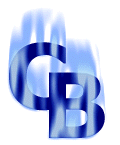Booting your computer is the process that occurs right when the power is turned on to the point when the operating system is being loaded. Simplified Version: 1. You turn on the computer. 2. The computer checks itself out to make sure it is working properly. 3. Looks for files that tell the computer to do next, which would include starting the operating system. 4. Last, you get control of the computer. Detailed booting up your computer: 1. The power is turned on! 2. A signal is sent to reset CPU. 3. A signal also tells the computer to start the boot program located in the ROM chips the BIOS. 4. The BIOS starts POSTs (power-on self-tests). A. CPU and POST program checks by reading code and checking against the original. B. The CPU sends signals through system to check the bus. C. The CPU checks the system timer. D. The memory on display adapter and video signals that control the display and makes the adapter BIOS code part of the system's main BIOS and memory configuration, now you begin to see information on screen. E. The CPU reads and writes data to each chip of RAM and compares it to what it receives back (screen shows running account of memory checked). F. The CPU checks for the keyboard and if any keys were pressed. G. The CPU sends signals to the drives to see which ones are available. H. The POST test results are compared to records in the CMOS chip. 5. The components that contain their own BIOS integrate with the system BIOS and memory usage. 6. The Plug and Play is implemented to distribute memory. 7. The system is ready to load the operating system. Next part: 1. The computer checks the disk drives: A. If a disk is inserted it searches for an operating system namely the files IO.SYS and MSDOS.SYS. B. If the disk inserted does not contain to any system files then it prompts for removal of the disk. C. If there is no disk, it goes to the hard drive. 2. The disk with the system files boot program reads the DOS boot record data stored on the disks first sector and copies the data to the RAM. 3. The BIOS now gives control to the boot record by branching from the hexadecimal address 7C00 (address the BIOS uses to load the boot record to memory). 4. The boot record loads the IO.SYS into the RAM and is now not needed. 5. The SYSINIT takes control of the start up process and load the MSDOS.SYS into the RAM. 6. For DOS systems the SYSINIT searches for config.sys and tells MSDOS.SYS to execute the commands config.sys contain. 7. The SYSINIT then tells the MSDOS.SYS to load COMMAND.COM, which loads the extensions to I/O functions, loads in the memory with the BIOS, and becomes part of the operating system. 8. The second part of COMMAND.COM contains some DOS commands that are written into the high end of the conventional RAM and can be written over by other programs that may need the memory. 9. The third part searches for autoexec.bat and executes it. 10. That is the end of the boot process. |




